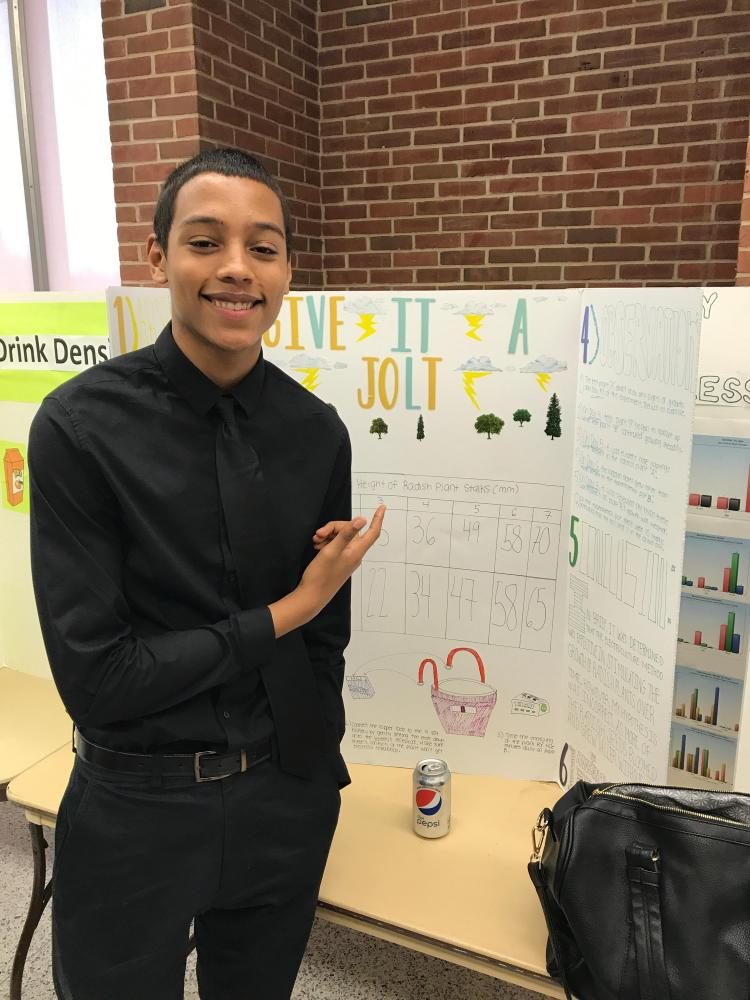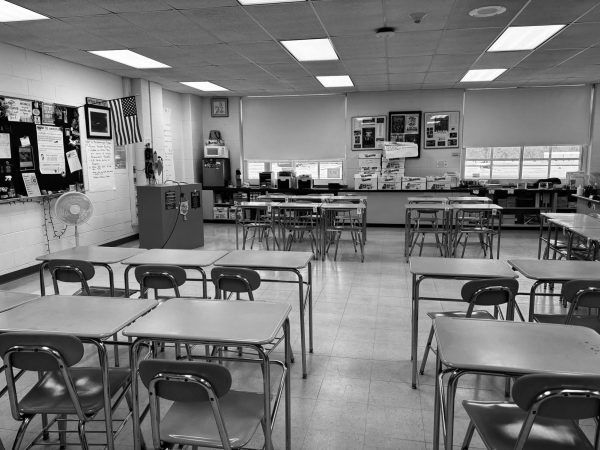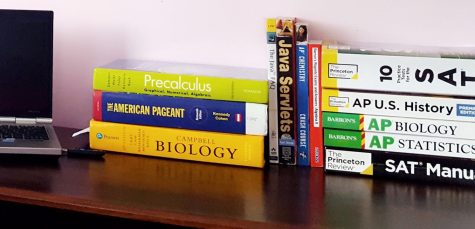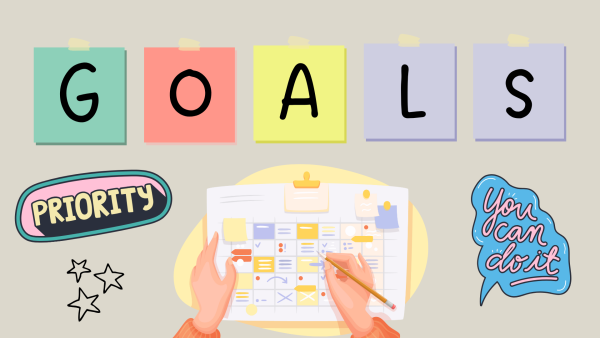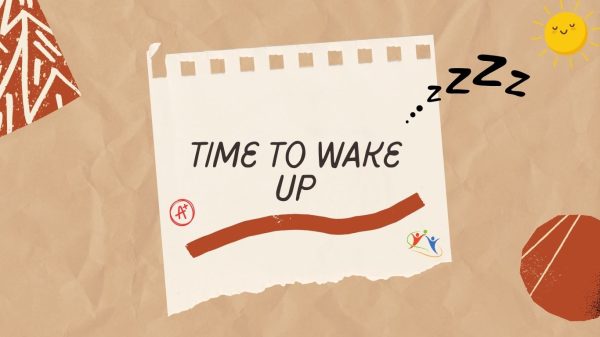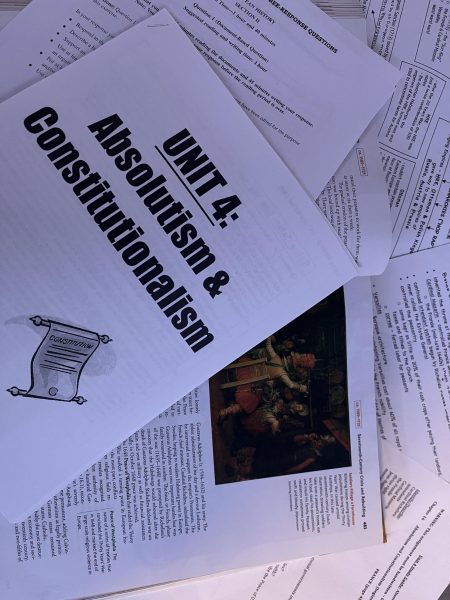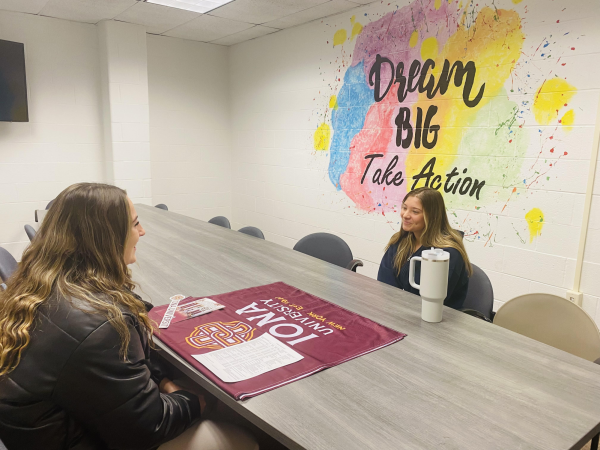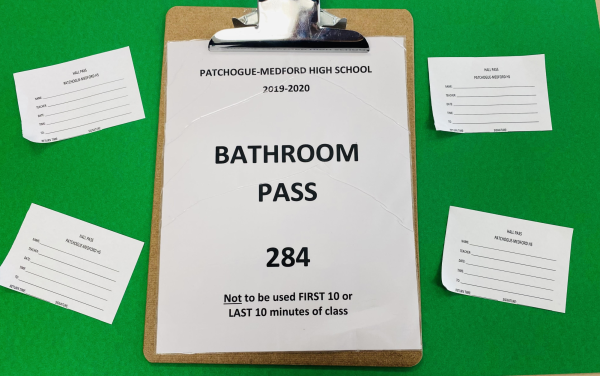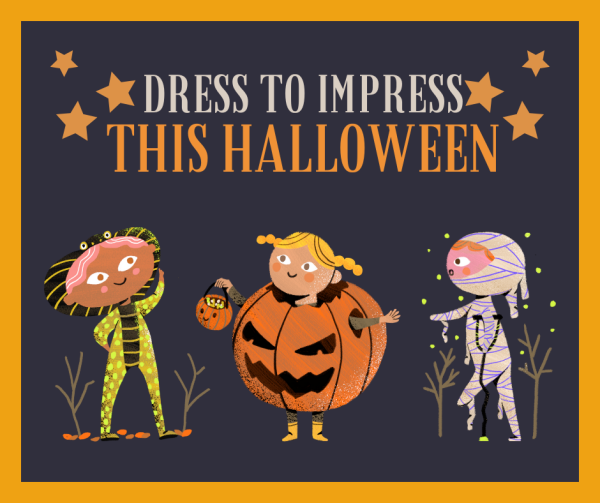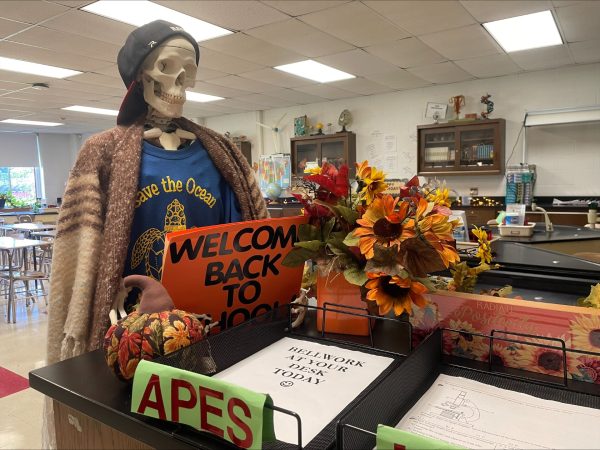Don’t Miss Your Shot
High school is a time of self-discovery. In that time, don’t forget to explore all the world of academics has to offer. One student shares his experience finding success in STEM.
Photo by Malyk Leonard, mentor
Tristan Moreau poses with his experiment that earned him special opportunity to attend an event at the Brookhaven National Laboratory.
Imagine this… a wide grin painted on your face as you tear open the letters from the universities you applied to, yearning to hear the right words. You fumble with the seal, and eventually the adrenaline dies down before clenching the paper within. In your hands you grasp a flimsy sheet of paper that contains the most important message you’ll ever receive. You have been accepted to the school you’ve only dreamed about, with a few scholarship possibilities for you. If this sounds like something you would want there is a particular unit of study to put you on this track. This focus is STEM. If you’re not already aware of it, the acronym STEM stands for emphasis on science technology engineering and mathematics. This is a major resource for students to acquire and have under their belt before submitting college applications or considering demanding science or math related occupations. Most students overlook opportunities that require their time or presence regarding STEM, and pass by programs willing to unlock their full potential or capability in these fields or in school.
I was introduced to the STEP enrichment program thanks to an unlikely teacher. One day, my study hall teacher, Dr. Borowski, observed me sorting through bundles of notes and searching vigorously for additional information on an upcoming exam. I stood up to dispose of something and he calls me over, paper in hand. I’m intrigued, so I lumber over and he starts giving me this spiel about a minority educational program where I had to give up my precious Saturday mornings to learn things. This idea initially put me to sleep; but, I decided to grab that application and give it a try. Little did I know, I had stumbled upon a resource that would grant me possible college recommendations and notoriety in science expos and fellow programs across Long Island.
After attending the first meeting, I felt apprehensive about the whole program. Who wants to sit in 3 dingy college classrooms with kids you don’t know to discuss schoolwork during the weekend? The concept of taking 3 courses was pretty off-putting at first. However, I soon discovered the STEP program was an introduction to the world of STEM, allowing students from various districts to share ideas, contribute to each other’s notes, and learn how to collaborate to make something great. Mr. Joseph taught me how to manipulate computers and the fundamentals of coding, as I obtained a degree from a website called Tynker.com. Mr. Brockman informed me about the basics of chemistry, about ionic bonds , elements, composition, colors, and more that would be valuable for next year’s courses in high school. And last but not least, Mrs. Lockhart inspired me in her leadership class to strive for greatness, and how to utilize time management and self-affirmations to shape my life the way I wanted it. This little program had gone farther than just educating me about additional information, and drilled punctuality, confidence, and resilience into me. Some students even excelled in topics they dreaded in school, finding a new passion for science, technology, math and other subjects.
In addition, every student was assigned a task: to ruminate about a science project relating to math or technology and to create a descriptive informational poster for professors to judge with science fair presentations to follow. Heads turned and eyes rolled throughout the bustling classroom. The STEP program includes an independent assignment where students research a topic of interest and complete a thorough and complex project over the course of two months. So, I got to work.
My project involved a method called electro- culture, an increasingly popular agricultural method that permits external electrical forces to stimulate seed germination and plant growth. By the time the science fair came around, I was ready. I came to the Suffolk campus dressed for success and geared up, ready to engage with fellow students and judges. Sure enough, flocks of young scientists, professors, and mentors scattered across the room, examining experiments throughout the massive Montauk Point Room. I could feel fluttering butterflies in my stomach fade away as I marched through the double doors. I unfolded my board, set up my plants and rods for the experiment and prepared to explain it all. I had people swarming over after the first few faulty presentations, but I improved my statements and elaboration as time went on. Gradually, judges came over, asked specific questions about how I selected my experiment, what caused plant growth originally and other interrogative remarks. But I was succinct in my replies and demonstrated how I conducted the experiment, having the original supplies with me. After what seemed like days, the fair ended and students boarded their buses en route to their high schools. Thoughts raced through my mind like a motorcycle. Did I place in the science fair? Had I sounded arrogant? I soon discovered these second guesses were just nerves. I headed home; thrilled for the upcoming classes and events I could bring my present my project. After that day, I soared.
I soon was invited to attend an event at Brookhaven National. About 10 of us boarded a bus before school started and took a trip to our destination. Contributors and great inventors came along with similar groups of young inquisitive kids like us.. Before presenting, we were free to browse the building’s lobby, where members from institutions such as Molloy College and the Cradle of Aviation were present. I was given the opportunity to be an intern at Plum Island and the Cradle of Aviation, a feat I never thought I’d come across. I had the honor of listening to the achievements and lessons from Dr. Marshall Jones and Dr. Esther Takeuchi; two decorated hall of fame inventors. This program also held an awards ceremony, I placed first for the science fair and earned 4 awards in total. I even presented an acceptance speech summarizing the value of STEM, the importance of programs like STEP, and people I had to thank.
Teenagers should be involved with the STEM studies because it leaves a blank canvas for students to engorge with their talent and endless possibilities for success. I took a little initiative by waking up early every weekend to participate in this program and it has earned me so many precious things, like notability, amazing experiences, and stellar life lessons. I also had the chance to meet people I could only have dreamed would motivate me and become stellar influences for further projects. Extracurricular activities and enrichment classes are only a start to paving pathways to success. Who knows? If you put some effort into STEM you might receive a scholarship. Students nationwide should consider taking STEM programs into their repertoire, as the roads are endless and the future is bright. Don’t miss your shot and get out there!

